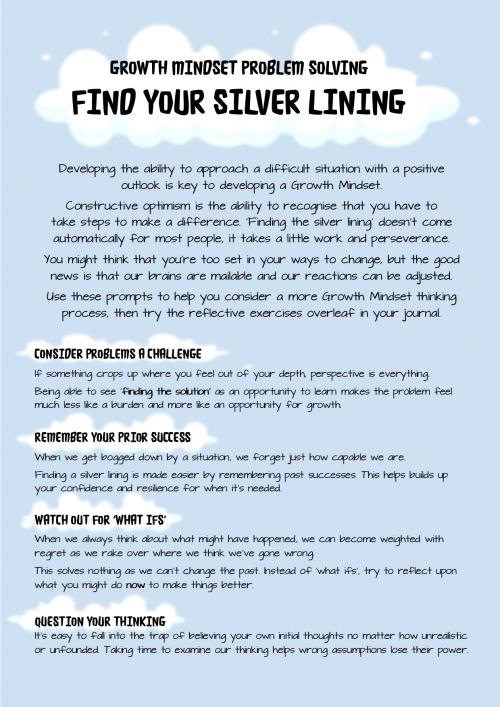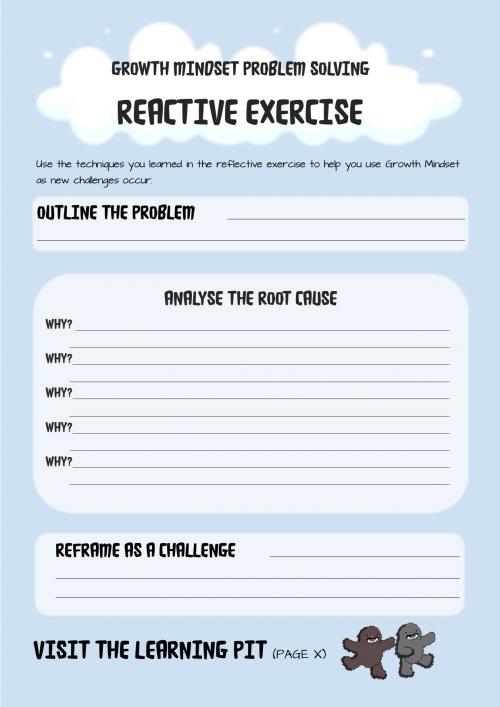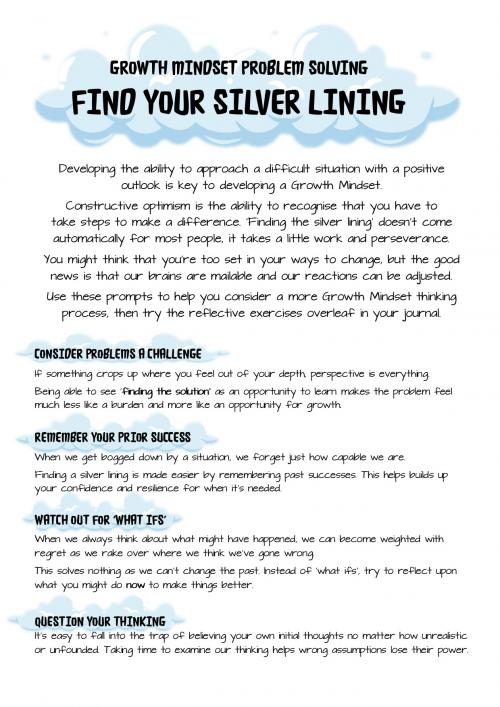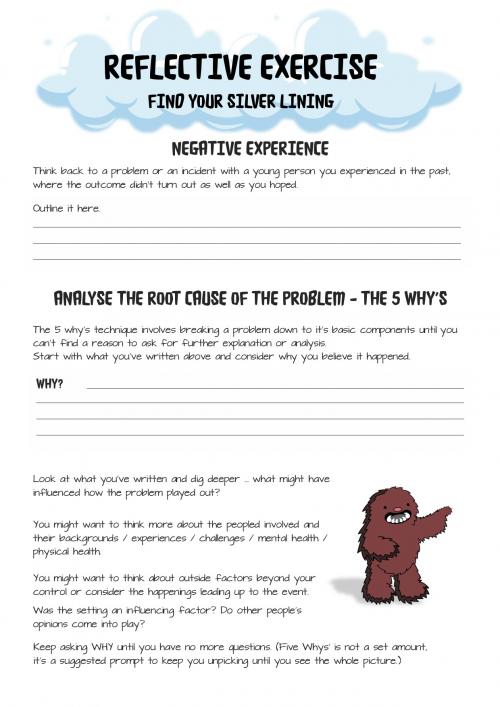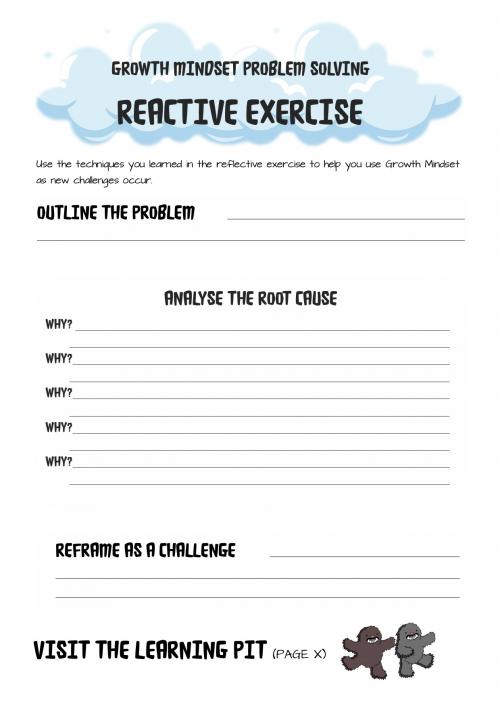FIND THE SILVER LINING

Developing the ability to approach a difficult situation with a positive outlook is key to developing a Growth Mindset.
Constructive optimism is the ability to recognise that you have to take steps to make a difference. ‘Finding the silver lining’ doesn’t come automatically for most people, it takes a little work and perseverance.
You might think that you’re too set in your ways to change, but the good news is that our brains are mailable and our reactions can be adjusted. Use these prompts to help you consider a more Growth Mindset thinking process, then try the reflective exercises in your journal or download and print the journal resource below.
If something crops up where you feel out of your depth, perspective is everything. Being able to see ‘finding the solution’ as an opportunity to learn makes the problem feel much less like a burden and more like an opportunity for growth.
When we get bogged down by a situation, we forget just how capable we are. Finding a silver lining is made easier by remembering past successes. This helps builds up your confidence and resilience for when it’s needed.
When we always think about what might have happened, we can become weighted with regret as we rake over where we think we’ve gone wrong. This solves nothing as we can’t change the past. Instead of ‘what ifs’, try to reflect upon what you might do now to make things better.
It’s easy to fall into the trap of believing your own initial thoughts no matter how unrealistic or unfounded. Taking time to examine our thinking helps wrong assumptions lose their power.
When facing challenges, appreciating the good things in life has a way of putting things into a more manageable perspective.
If you are looking toward the future and are not excited about much, then it’s time to find something to look forward to. Looking forward to something meaningful can give you just the boost you need when things are tough.
When a person is preoccupied with feelings of anger or resentment towards others, they are less open to experiencing optimism and finding positives.
Given that optimism is learned, try to show children how to see the good side of things. By modelling this response, you better equip them with important coping tools and train your own thinking in the process.
Be wary of the story you tell yourself, as you may find yourself acting it out.
Set up your brain to be positive for the day by identifying three things you’re grateful for from the previous day, before you get out of bed.













